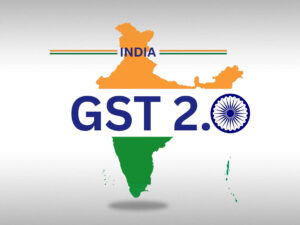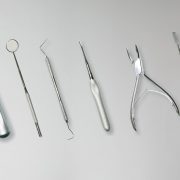On Monday, September 22, 2025, a significant milestone was reached in the realm of indirect tax reforms in India with respect to its consumer and healthcare sector. The GST Council changed the GST slabs to 5% and 18% effectively, eliminating the 12% and 28% brackets. From 22nd September 2025, new GST rates on healthcare are all set to improve the affordability and accessibility of essential medical services for all citizens. These pivotal reforms, led by Indian Prime Minister, Sh. Narendra Modi, will have a direct effect on the prices of medicines, medical equipment and insurance costs.
Explaining the Updated Healthcare GST Rates
The majority of medicines, which were previously taxed at 12% under GST, will now face only a 5% tax rate. This significant decrease will directly result in lower costs for patients nationwide. Furthermore, this modification is consistent with the government’s effort to lessen the financial strain on families and improve access to crucial treatments. A vast number of commonly used medicines will also now be much more affordable.
Exemptions for Vital Medications
In a generous initiative, the GST Council has entirely exempted 36 essential life-saving medications from any GST fees. These include vital treatments for
- cancer,
- genetic disorders,
- rare diseases and
- serious cardiovascular issues.
Specifically, three crucial drugs for rare conditions and bleeding disorders, which were earlier taxed at 5%, will now have a ‘nil’ GST rate.
Additionally, 33 other life-saving medications have seen their GST drop from 12% to 0%. This ground-breaking decision will significantly lessen the financial burden on patients with serious and chronic conditions, making necessary treatments more accessible.
Effects on Medical Equipment and Insurance Costs
For the Medical and Dental community, this is a moment of great celebration as the restructuring of tax rates also applies to medical devices, resulting in a considerable decrease in GST rates for most dental equipment, surgical supplies and consumables, lowering them typically from 18% or 12% to 5%. This reform creates a notable positive effect for practicing dentists in India, providing them with a valuable chance to reduce costs in their dental clinics.
Corrective eyeglasses and glucometers will also join the list of items with reduced GST. Furthermore, health and life insurance premiums will now be completely exempt from GST, offering significant relief to policyholders. This change will make insurance more affordable, especially for those with limited financial means, encouraging broader acceptance of health coverage.
The GST reduction not only applies to new inventory but also to pre-existing stock sold on or after September 22, 2025, with the revised MRP showing lower GST rates than previously. There is no need to re-label MRPs, but manufacturers and distributors are expected to inform all channel partners about the new prices and tax rates.
A. Dental Equipment and Materials
- GST on almost all core dental instruments, apparatus, and equipment – including hand-pieces, dental chairs (equipment category), scalers, forceps, mirrors, syringes, needles, and ultrasonic cleaning devices has been slashed from 18% (and in some cases 12%) down to 5%.
- Consumables like gloves, masks, impression materials, filling materials (amalgam, composites), cements, waxes and prosthetic materials now also attract only 5% GST instead of prior rates (12%-18%)
- Similarly, consumables like cotton, gauze, bandages, diagnostic kits, reagents etc. also move to 5% from 12% or higher.
- Oral hygiene items like toothpastes, toothbrushes, dental floss also get a 5% slab (they were 18% or so)
- All medical apparatus, instruments, devices, appliances used for medical, surgical, dental, veterinary or for physical or chemical analysis are now taxed at 5% (if earlier they were 12% or 18%).
- High-value diagnostic equipment, such as intra-oral and extra-oral X-ray machines, is now taxed at 5% GST.
- The caveat is that: Not every single dental device may be automatically in 5% as some exemptions or special classifications might still apply. Thus, any dental tool, machine, implant (if classified under appropriate HSN), consumable, or material that qualifies under “medical/dental instruments/apparatus” should now attract 5% GST instead of the older, higher rates.
- However, extremely specialized items like intraoral scanners (for digital impressions) remain at 18% GST due to their classification as luxury / high-end diagnostic devices.
B. Dental Laboratory Bills
GST on dental lab materials and prosthetic products (crowns, bridges, implants, dentures, orthodontic brackets and wires) has dropped from 12% to 5%, making lab bills and outsourced fabrication considerably more affordable for practitioners and patients.
C. Cosmetic Dentistry Bills
Cosmetic dental procedures (veneers, whitening, smile makeover kits) still attract 18% GST, which remains unchanged.
D. Exemptions and Services
- Direct dental healthcare services performed by registered dentists like extractions, restorations, root canal, routine consultations etc. continue to remain exempted from GST, as they are considered essential health services by the government.
- Diagnostic services provided by dental labs also remain GST exempt, keeping testing affordable and not raising lab-related costs for practitioners.
List of Dental Items with GST Changes:
A. Items Moving to 18% → 5% GST (Major Reductions)
- Dental Instruments
- Dental Hand-pieces and motors
- Dental chairs – Equipment category chairs
- Dental scalers – Ultrasonic and manual scalers
- Ultrasonic dental equipment – Cleaning and therapy devices
- Dental forceps – Extraction instruments
- Dental mirrors, probes, elevators
- Dental chisels, retractors, spatulas
- Dental needles and syringes
B. Consumables (12% → 5%)
- Gauze, bandages, cotton wadding – Essential wound care
- Adhesive dressings – Surgical patches and tapes
- Cotton rolls – Saliva control materials
- Disposable gloves – Protective equipment
- Surgical masks
C. Diagnostic Equipment (12% → 5%)
- All diagnostic kits and reagents – Testing materials
- Glucometers – Blood sugar monitoring
- Pulse oximeters – Oxygen saturation monitors
- X-ray machines – (intra-oral, extra-oral, portable dental X-ray)
D. Prosthetics & Implants (12% → 5%)
- Dental implants – Titanium fixture systems
- Dental crowns and caps – Tooth restorations
- Artificial teeth – Prosthetic replacements
- Dentures – Complete and partial prosthetics
E. Dental Materials & Lab Work (12% → 5%)
- Dental amalgam – Filling materials
- Impression materials – Moulding compounds
- Dental cements – Bonding agents
- Composite resins – Tooth-coloured fillings
- Dental wax – Laboratory materials
- Orthodontic brackets and wires – Braces components
- Dental burs and discs – Cutting instruments
F. Personal Care Items (18% → 5%)
- Toothpaste
- Toothbrushes
- Dental floss
- Mouthwash
G. Items with NO GST Change (Remaining at 18% GST)
- Dental chairs (furniture category) – (not equipment category)
- Operating/examination tables – Medical furniture
- Specialty instruments and certain surgical kits
- Cosmetic dental materials – Whitening gels, smile makeover kits, veneers
- Dental veneers – Both lab-made and direct clinical
- Thermometers (digital and infrared)
- Intra-oral Scanners – Remain at 18% GST as high-end diagnostic devices used for digital impression-making
- CBCT (Cone-Beam CT) Machines – Still attract 18% GST as advanced imaging equipment – Dental X-ray machines (for basic imaging) are now at 5% GST, but CBCTs, due to their complexity and classification, are listed under medical imaging devices taxed at 18%.
- Dental 3D Printers – Remain at 18% GST

Summary Table: Key Dental GST Rate Changes
Practical Impact with Expected Gains and Losses
Dentists in India can now anticipate lower expenses for instruments, materials, and outsourced lab work, leading to improved profit margins and more affordable dental care for patients.
- In general, dental clinics may experience a decrease in procurement and operational expenses, enhancing profitability and allowing them to provide care at lower prices for patients. For items that were already taxed at 5%, there may be no alteration.
- The “carrying cost of your consumables inventory” diminishes somewhat, resulting in an improved break-even margin for each procedure.
- These reforms are particularly advantageous for individual practitioners and smaller clinics, which operate with narrow profit margins and accrue considerable costs for inventory and laboratory outsourcing.
- Dentists must ensure that e-invoices, purchase records, and billing generated after September 22, 2025, accurately reflect the new GST rates.
- If you possess a GST number associated with the HSN code for cosmetic services (e.g. SAC 999722) that incurs an 18% GST, you will now face revised Input Tax Credit (ITC) regulations since your purchasing tier is now 5% for cosmetic materials. First, verify that your purchase is eligible for ITC (and even then, you can only reclaim a 5% portion back).
- Some medical/dental suppliers have historically enforced restrictions on ITC, and for mixed equipment (including some non-dental or “luxury” accessories), disputes over classification may occur (dental dealers often attempt to classify components under a different code).
- Compliance check: Ensure that suppliers accurately classify dental apparatus and materials under the 5% category.
- For stock on hand (purchased before September 22) that was bought at higher GST rates, you must meticulously reconcile credits and handle them appropriately in your returns.
- Audit and classification risk: Tax authorities may question whether a specific instrument genuinely qualifies under the “dental apparatus” category. Changes in slab rates may introduce reclassification risks (if tax authorities interpret an item differently).
- Keep documentation that supports the classification of items as “dental/medical apparatus.” Ensure that your invoicing, purchase orders, and vendor bills distinctly display the HSN classification and the correct GST rate – always maintain an audit trail.
CONCLUSION – Bottom Line for a Dentist
- Advantages: The recent reforms are advantageous for dentists. The reduced GST on dental tools, equipment and materials lessens your overall expenses. While the savings per procedure may seem modest (in the ₹300-₹700 range), these amounts can add up significantly. A mid-sized practice (handling approximately 20 crowns, 10 implants and 30 RCTs monthly) could potentially save around ₹25,000-₹30,000 each month (enough to cover the salary of a new assistant or the EMI for a new device, if these savings are not fully passed on to patients) simply due to the changes in GST rates (assuming suppliers/vendors apply the reductions and dentists are proactive in taking advantage of them).
- Challenges: The benefits, while helpful, are not substantial. If your service charge remains taxable or if the competitive landscape compels you to reduce prices, much of the advantage may be transferred to patients. Additionally, the real obstacle lies in the classification, adherence to regulations, and whether suppliers will provide the reduced costs.
- Strategic Approach: Rather than transferring all the savings to patients, consider reinvesting in your team, upgrading equipment, or enhancing the patient experience. In the long run, this approach can improve your profit margins (provided you retain a portion of the benefit).
REFERENCES (Alphabetically):
- Aditya Birla Capital – https://www.adityabirlacapital.com/abc-of-money/new-gst-rates-2025-full-list
- Business Standard – https://www.business-standard.com/industry/news/gst-2-0-survey-consumers-miss-out-food-medicine-price-cuts-125092900118_1.html
- Express Health Care News – https://www.expresshealthcare.in/news/gst-reforms-in-healthcare-a-clearer-vision-for-indias-future/450677/
- Goods and Services Tax Council – https://gstcouncil.gov.in/
- NDTV News – https://www.ndtv.com/topic/gst
- Press Information Bureau – https://www.pib.gov.in/
- The Hindu – https://www.thehindu.com/news/national/new-gst-rates-goods-and-services-cheaper-live-updates-september-22-2025/article70079103.ece
Disclaimer:
The details presented in this article are intended for general informational purposes and represent my comprehension of the GST 2.0 modifications for Dentistry in India.





















Comments